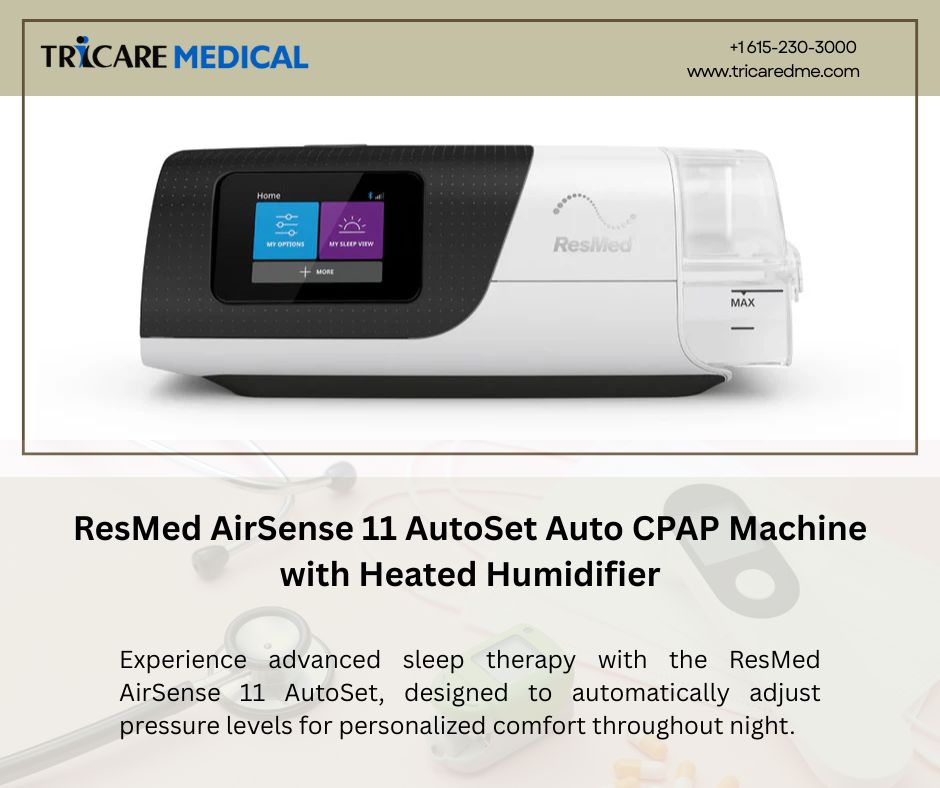Breathe Easy, Sleep Smart: Know the 4-Hour CPAP Rule
- 4 min reading time
Sleep apnea is a common yet serious condition that affects millions of people worldwide, disrupting sleep and posing significant health risks. Continuous Positive Airway Pressure (CPAP) therapy is the gold standard treatment for obstructive sleep apnea (OSA), helping patients breathe easier and sleep better. However, to maximize the benefits of CPAP therapy, adherence to its use is critical. One key guideline often discussed in CPAP treatment is the "4-hour rule." This blog post explores what the 4-hour rule is, why it matters, and how it impacts those using CPAP therapy.
What Is the 4-Hour Rule?
The 4-hour rule is a compliance benchmark commonly used by healthcare providers and insurance companies to evaluate whether a patient is effectively using their CPAP machine. Specifically, it refers to the requirement that a patient uses their CPAP device for at least 4 hours per night for at least 70% of nights—typically 21 out of 30 consecutive days—within a given monitoring period, often the first 90 days of therapy.
This guideline stems from clinical research indicating that using CPAP for a minimum of 4 hours per night provides measurable health benefits, such as reduced daytime fatigue, improved oxygen levels, and decreased cardiovascular strain. Most modern CPAP machines are equipped with data-tracking features that record usage time, allowing doctors and insurers to monitor adherence.
Why Was the 4-Hour Rule Established?
The 4-hour rule was developed based on studies showing that consistent CPAP use for at least 4 hours per night significantly improves sleep apnea symptoms and reduces associated health risks. Sleep apnea, if untreated, can lead to serious conditions like hypertension, heart disease, stroke, and diabetes. By setting a minimum usage threshold, the rule ensures patients receive enough therapy to experience these health benefits.
Insurance companies, particularly in the United States, often tie CPAP equipment coverage to compliance with the 4-hour rule. If a patient fails to meet this standard, insurers may deny continued coverage for the device, requiring patients to bear the cost themselves or return the equipment. This makes understanding and adhering to the rule crucial for those relying on insurance to afford CPAP therapy.
The Importance of CPAP Compliance
Adhering to the 4-hour rule is not just about meeting insurance requirements—it’s about improving your health and quality of life. Consistent CPAP use helps maintain open airways during sleep, reducing apneas (pauses in breathing) and hypopneas (shallow breathing). This leads to better sleep quality, increased energy, improved mood, and a lower risk of long-term health complications.
However, achieving compliance can be challenging. Many new CPAP users struggle with discomfort, mask leaks, or feelings of claustrophobia. To overcome these hurdles, patients should work closely with their healthcare provider to adjust settings, try different masks, or use features like ramp-up pressure to ease into therapy.
Tips for Meeting the 4-Hour Rule
To successfully meet the 4-hour rule and make CPAP therapy a seamless part of your routine, consider the following tips:
Start Gradually: If 4 hours feels overwhelming, begin with shorter sessions and gradually increase usage as you adjust to the device.
Optimize Comfort: Work with your sleep specialist to find a mask that fits well and feels comfortable. A proper fit reduces leaks and irritation.
Maintain Your Equipment: Regularly clean your CPAP machine, mask, and tubing to ensure optimal performance and hygiene.
Create a Routine: Use your CPAP every night, even for naps, to build a habit. Consistency is key to meeting the 70% compliance threshold.
Address Side Effects: If you experience issues like dry mouth or nasal congestion, ask about humidifiers or nasal sprays to improve comfort.
Read more: How to Size CPAP Nasal Mask Accurately for Your Face
Beyond the 4-Hour Rule
While the 4-hour rule is a helpful benchmark, it’s not the ultimate goal. Research suggests that longer usage—closer to 6–8 hours per night—yields even greater benefits for sleep apnea management. Patients who use CPAP for the entire duration of their sleep often report feeling more refreshed and experience better overall health outcomes.
If you’re struggling to meet the 4-hour rule, don’t hesitate to reach out to your healthcare provider or a sleep specialist. They can offer personalized solutions, such as adjusting pressure settings or exploring alternative therapies like bilevel positive airway pressure (BiPAP) if CPAP isn’t working for you.
Conclusion
The 4-hour CPAP rule is a critical guideline for ensuring effective sleep apnea treatment and maintaining insurance coverage. By committing to at least 4 hours of use per night for 70% of nights, patients can improve their sleep quality, reduce health risks, and meet compliance standards. With the right strategies and support, adhering to the 4-hour rule can become a manageable and rewarding part of your journey to better health.



